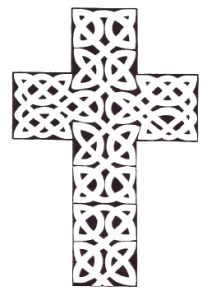The Historic Bravery Behind Celtic Tattoos
Celtic tattoos are the result of influences from various cultures that all work together to create one modern form. Celtic designs from thousands of years ago have become some of the world’s most popular tattoos.
 Christian priests invaded the country to convert the Celts after the Romans conquered Ireland. At this time, the Celts had no written language however, they were equipped with a visual style that was quite unique. It incorporated an attempt to suggest no beginning or end with their love for nature with complex and interlacing designs.
Christian priests invaded the country to convert the Celts after the Romans conquered Ireland. At this time, the Celts had no written language however, they were equipped with a visual style that was quite unique. It incorporated an attempt to suggest no beginning or end with their love for nature with complex and interlacing designs.
The Christian priests borrowed this aesthetic style and fused it to decorate early bible manuscripts. As a result, Christianity took over the nation and Celtic tattoos had their genesis. It is unknown if the inspirations were used in the earliest tattoos but rebellious Celt warriors wearing ink were spoke of by Julius Caesar.
Celt Warriors
Similar to the Picts who tattooed their warrior to offer intimidation, the Celts adopted this trademark. It was considered a very high honor to battle with the Celts. They were known for confronting their opponents either bare-chested or completely naked to reinforce an intimidation stance. They were also easily recognized by the way that they would dye their hair in bright colors from flower pastes and manipulate it into tall spikes around their head.
The Woad Plant
To perform tattoos, the Celts used the woad plant, a hardy biennial native to the British Isles and Europe. Woad produces indigotin, the blue dye chemical that was used for tattoos. The leaves were harvested and then dried. Once they were completely dry they would be boiled and strained over and over again.
The resulted paste was tapped into the warrior’s skin with some type of needle-like instrument that would force the stain under the top layers of skin, creating their design of choice.
Designs
Quite often, Celtic tattoos were merely accenting impressive scars that were acquired in battle. These combined with the nakedness and startling hair created quite an intimidating sight. It is believed that Celtic symbols were some of the first cultural symbols in tattooing to appear on a flesh canvas. Celtic knots would appear on arms and the chest as well as many symbolic animals.
If you’re afraid of needles then maybe hypnosis can help
Celtic tattoos are some of the most intricately-detailed and difficult ones to complete. If you have the desire to get one, make sure that your tattooist has a substantial amount of experience in them and can offer a portfolio to evaluate.
